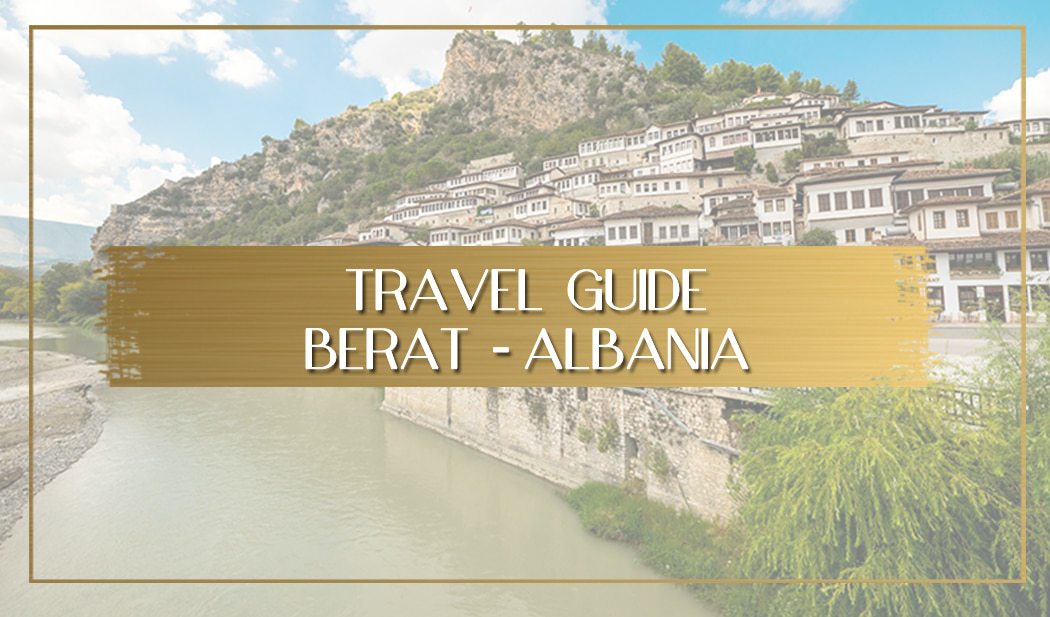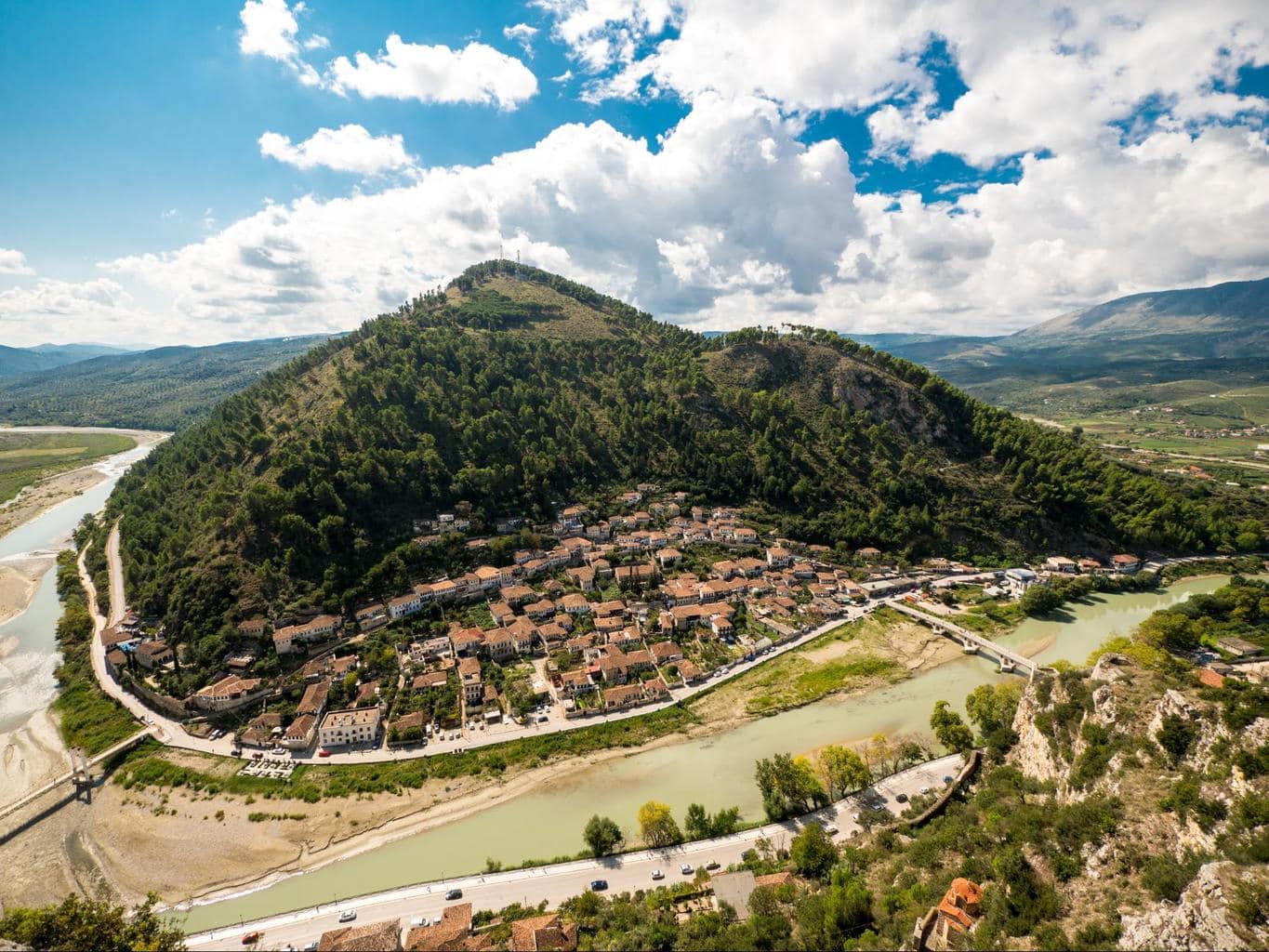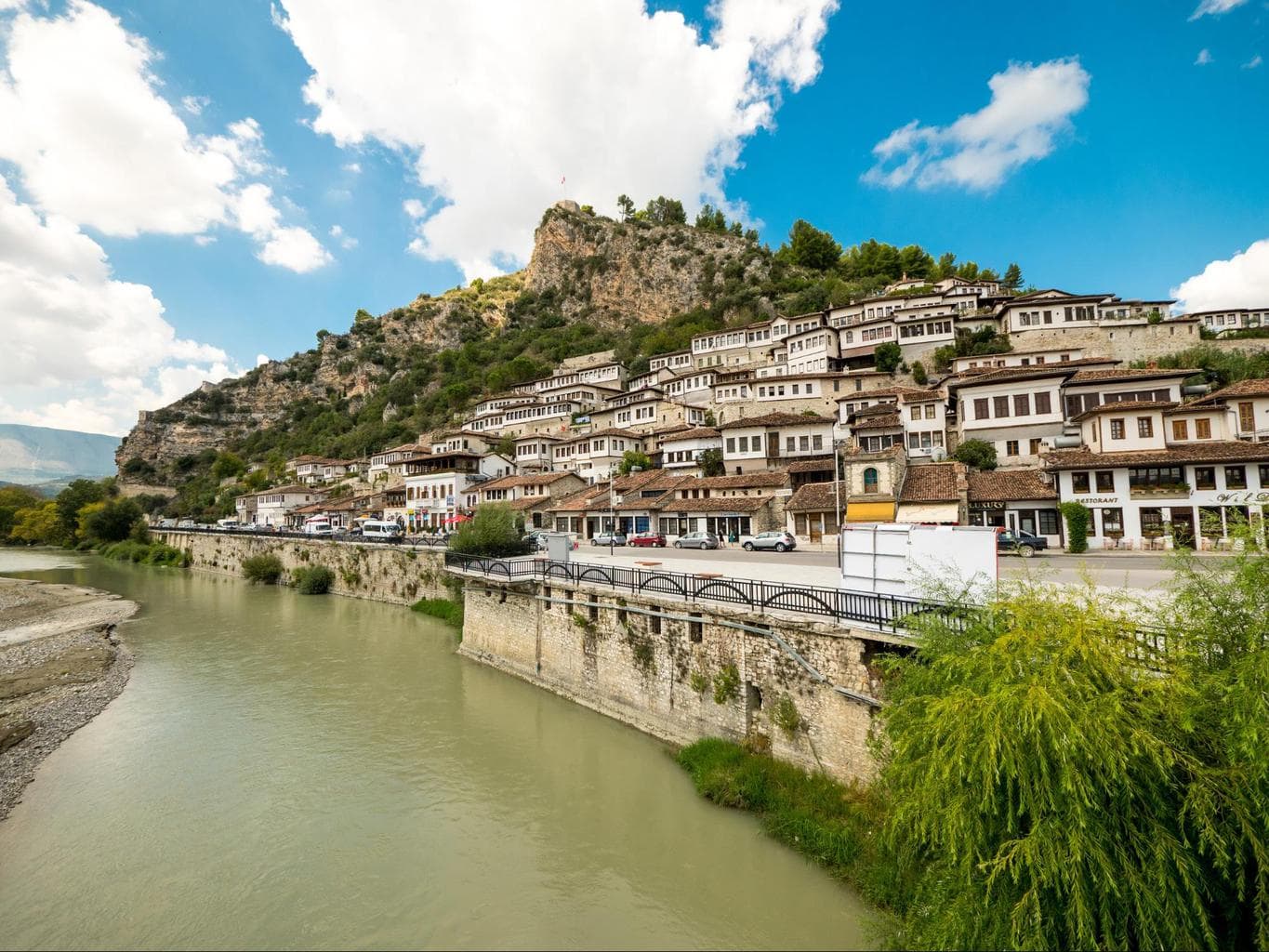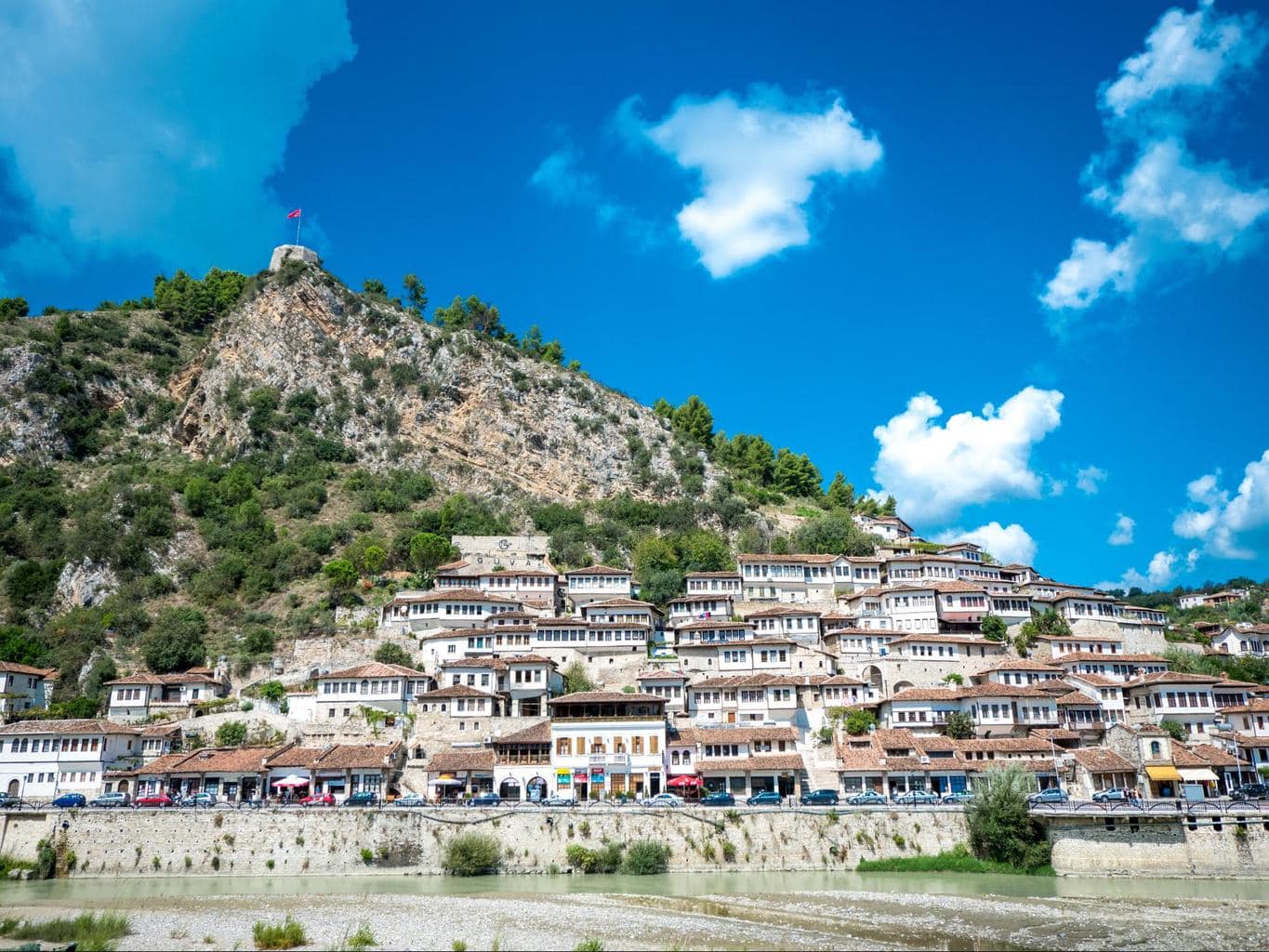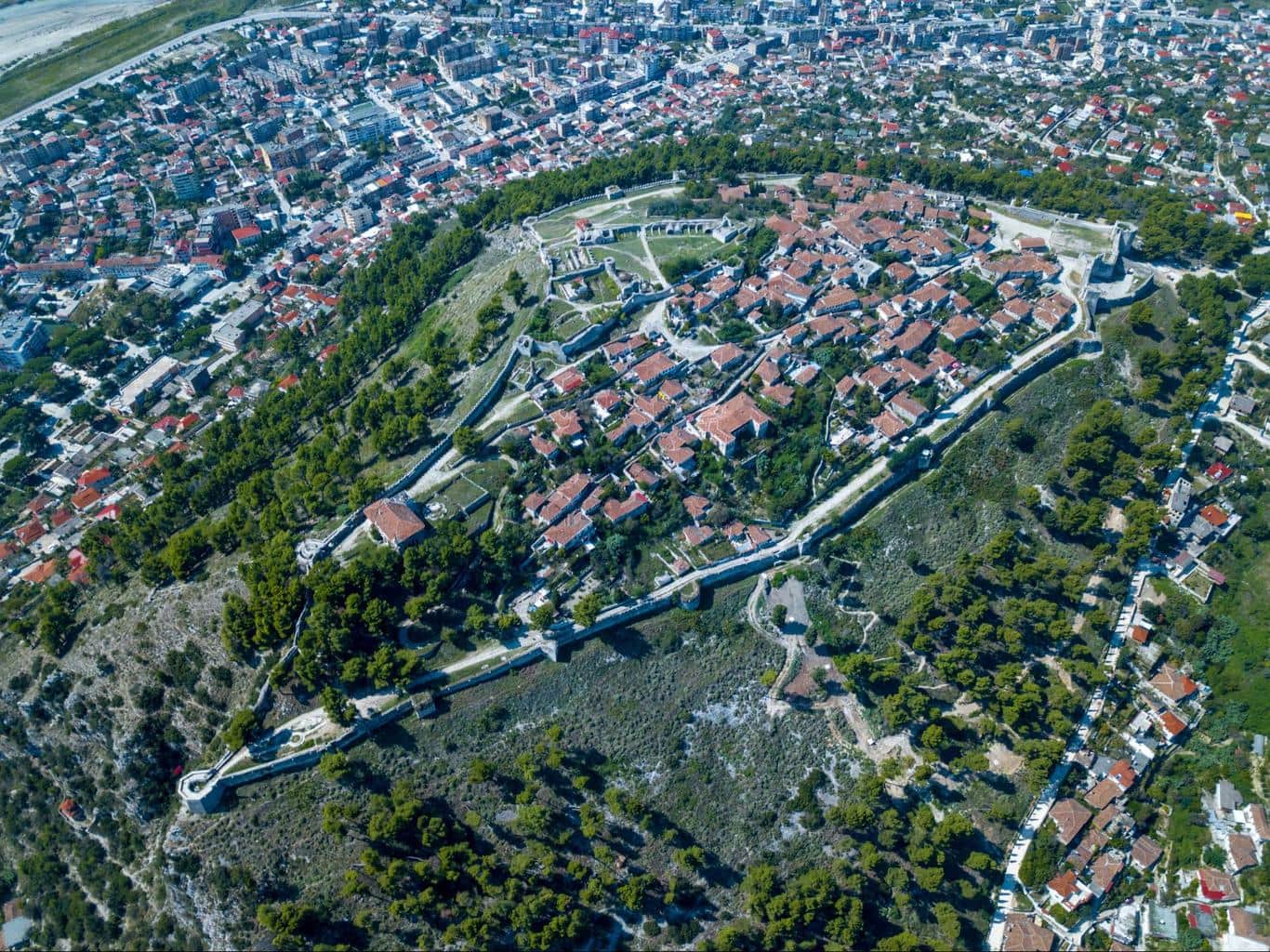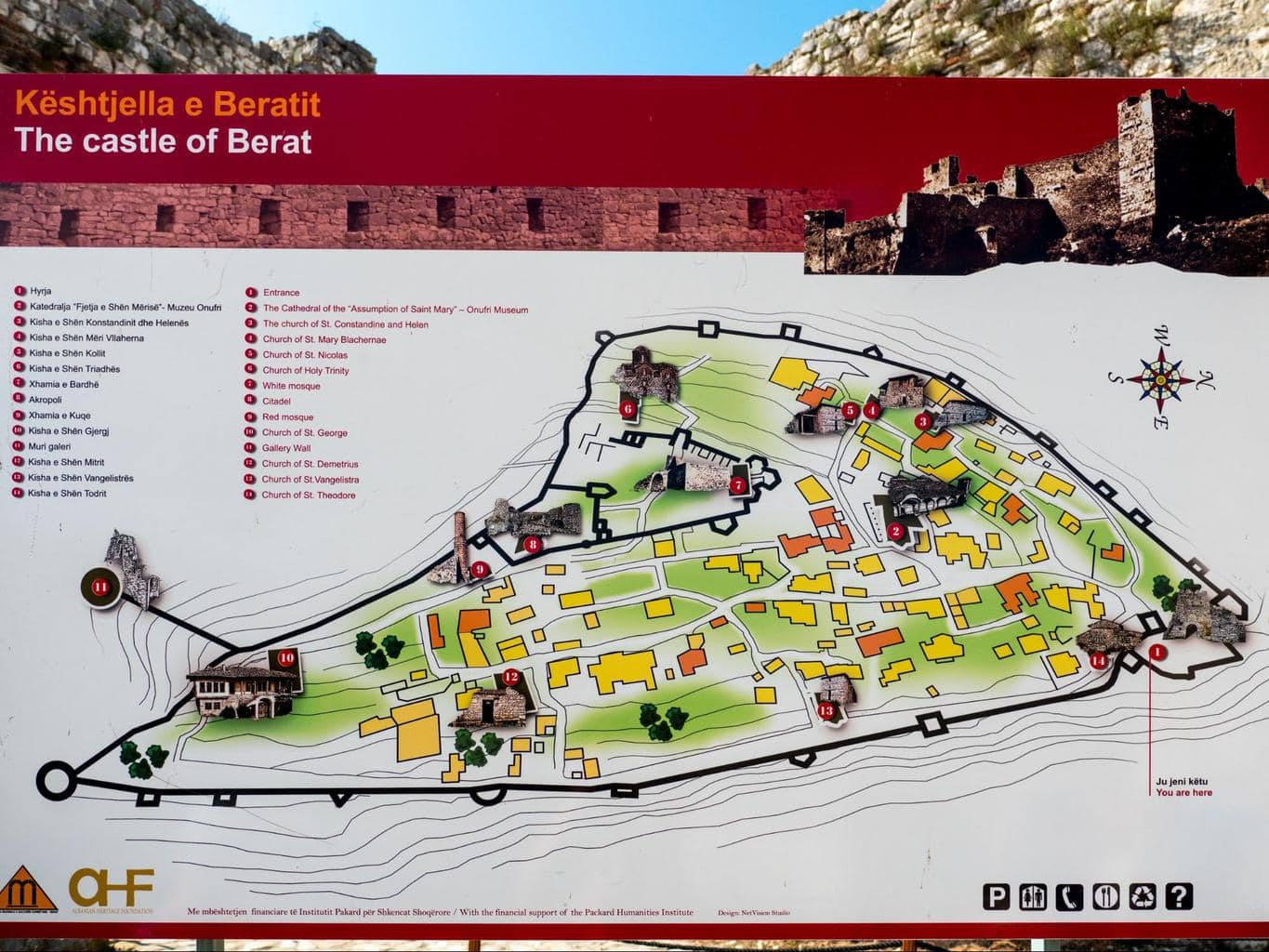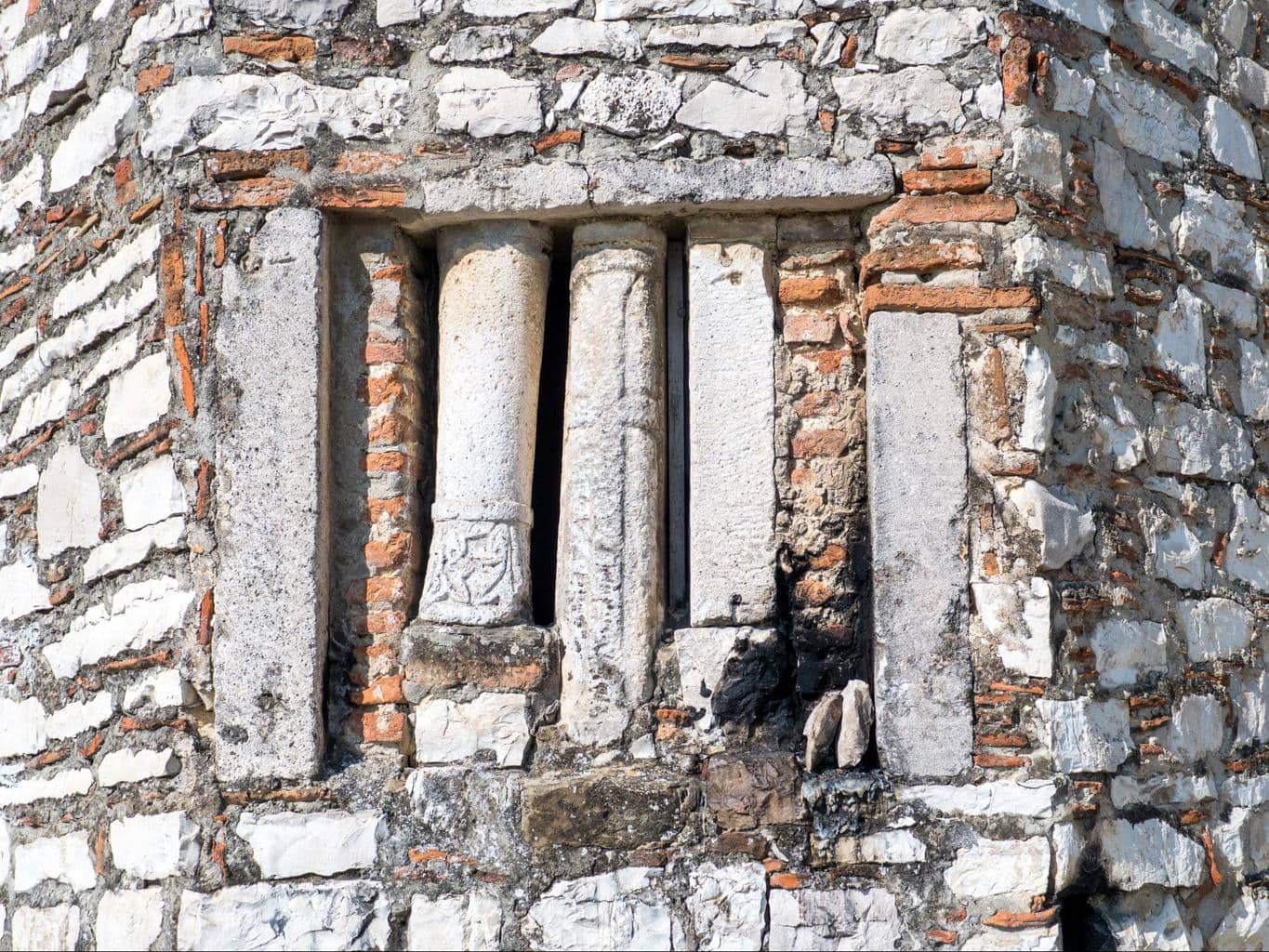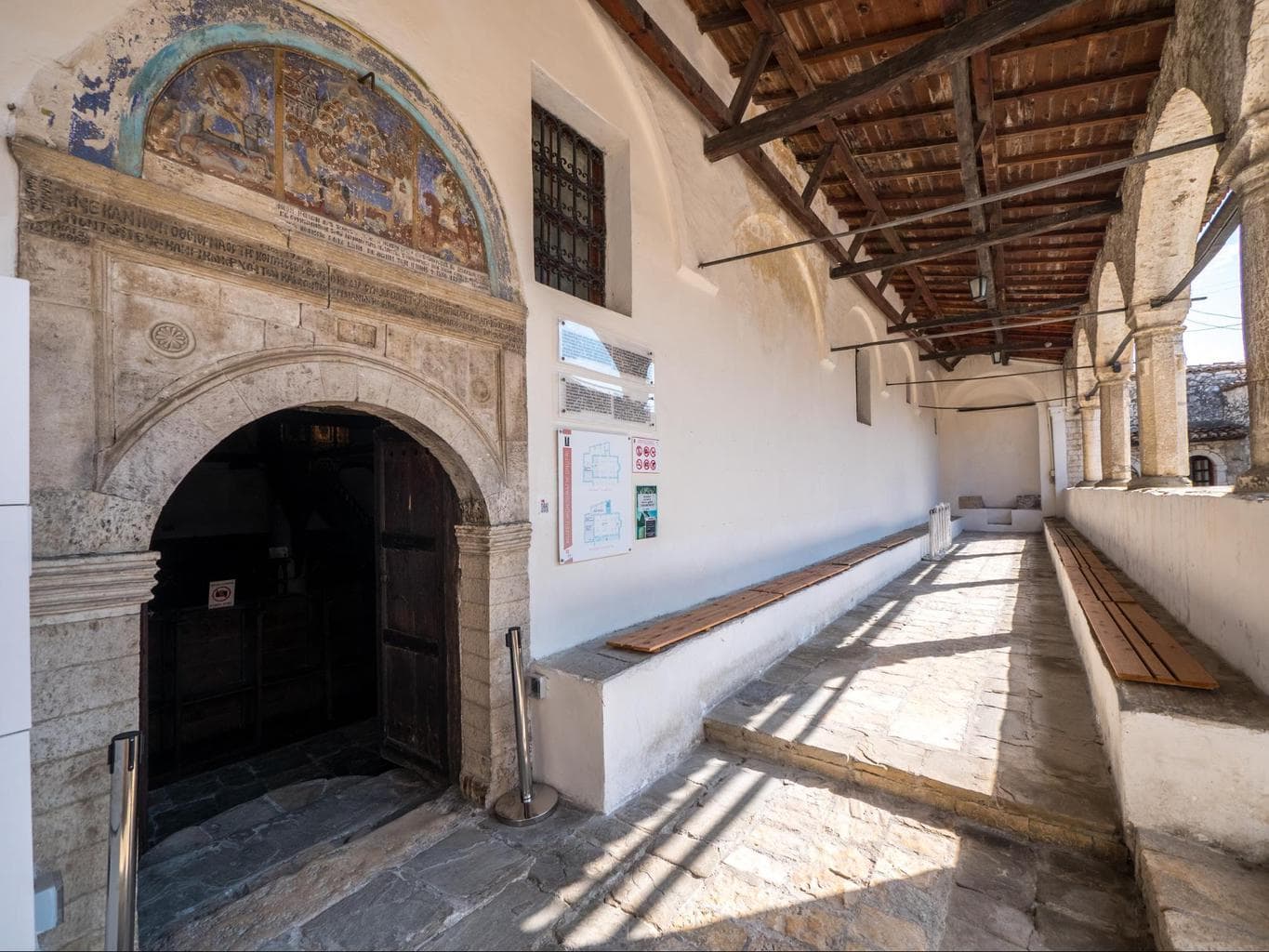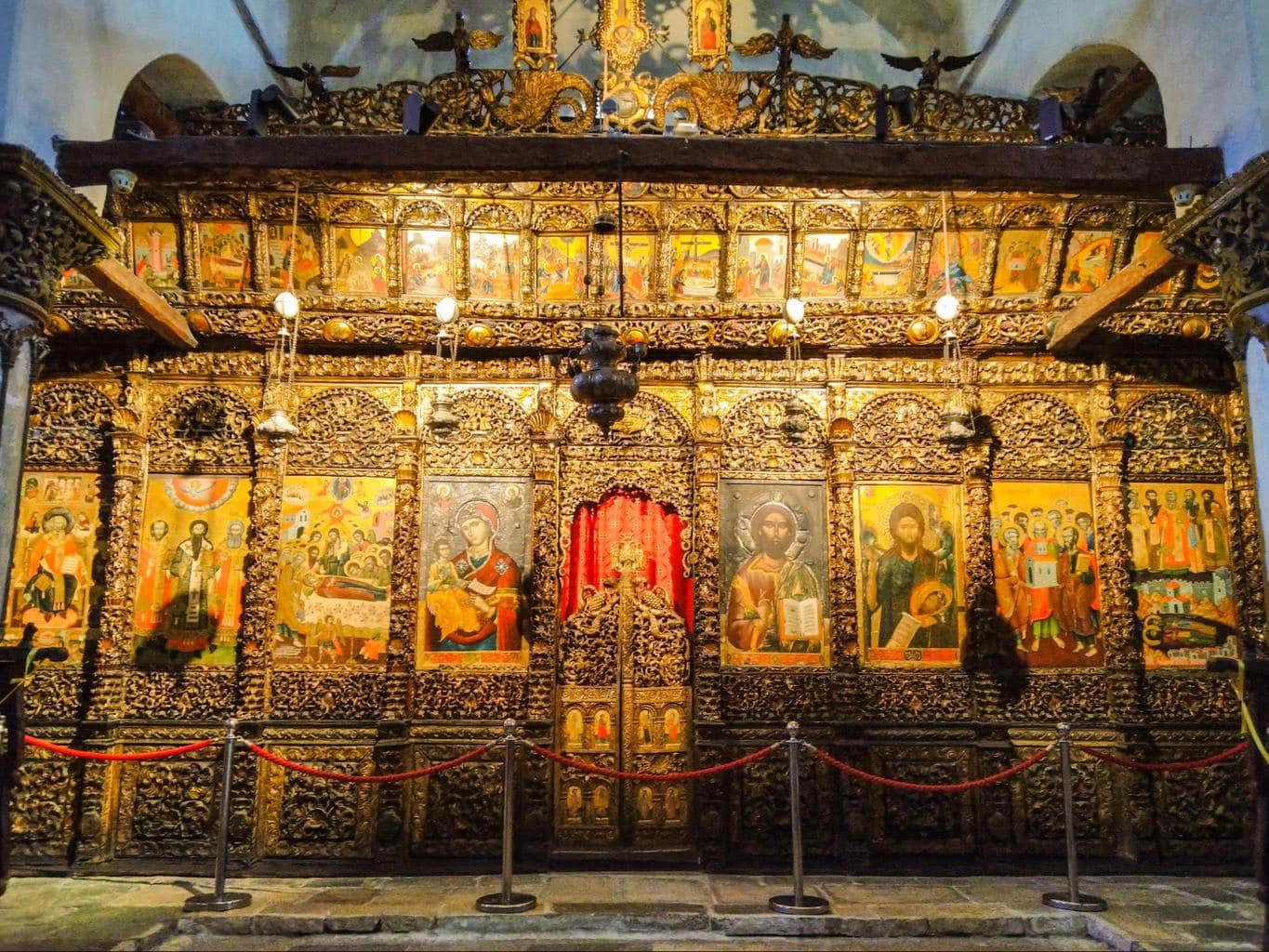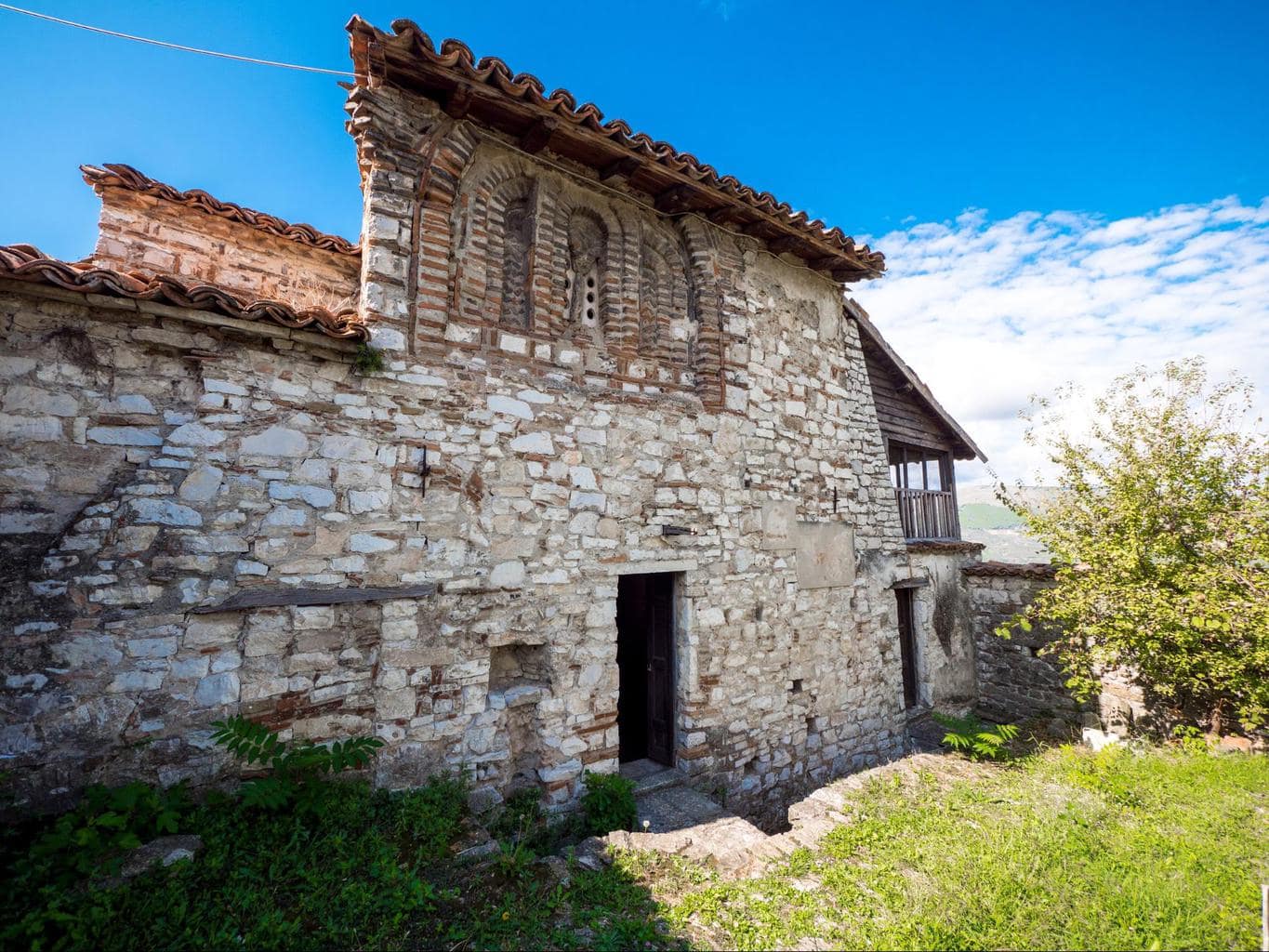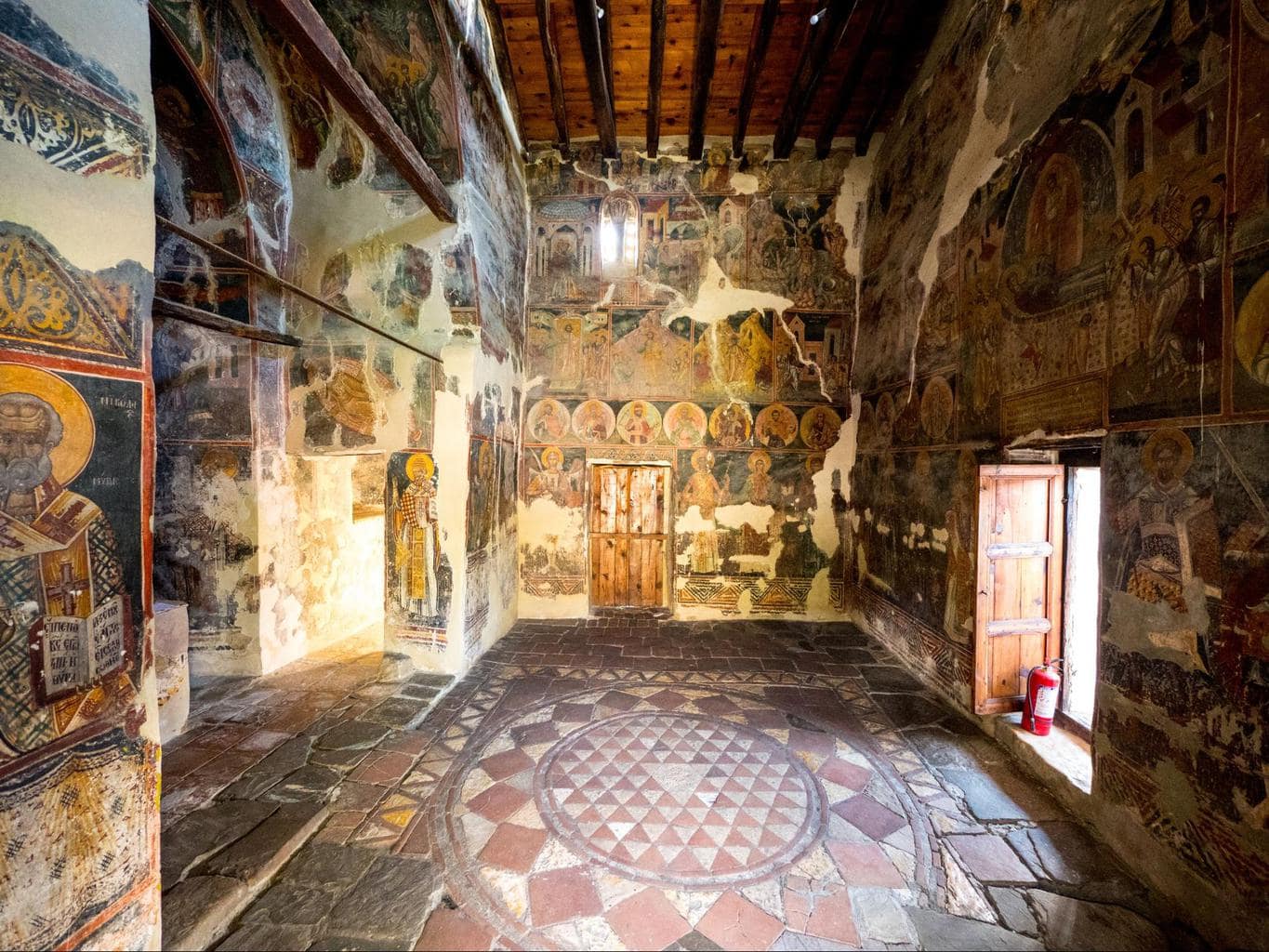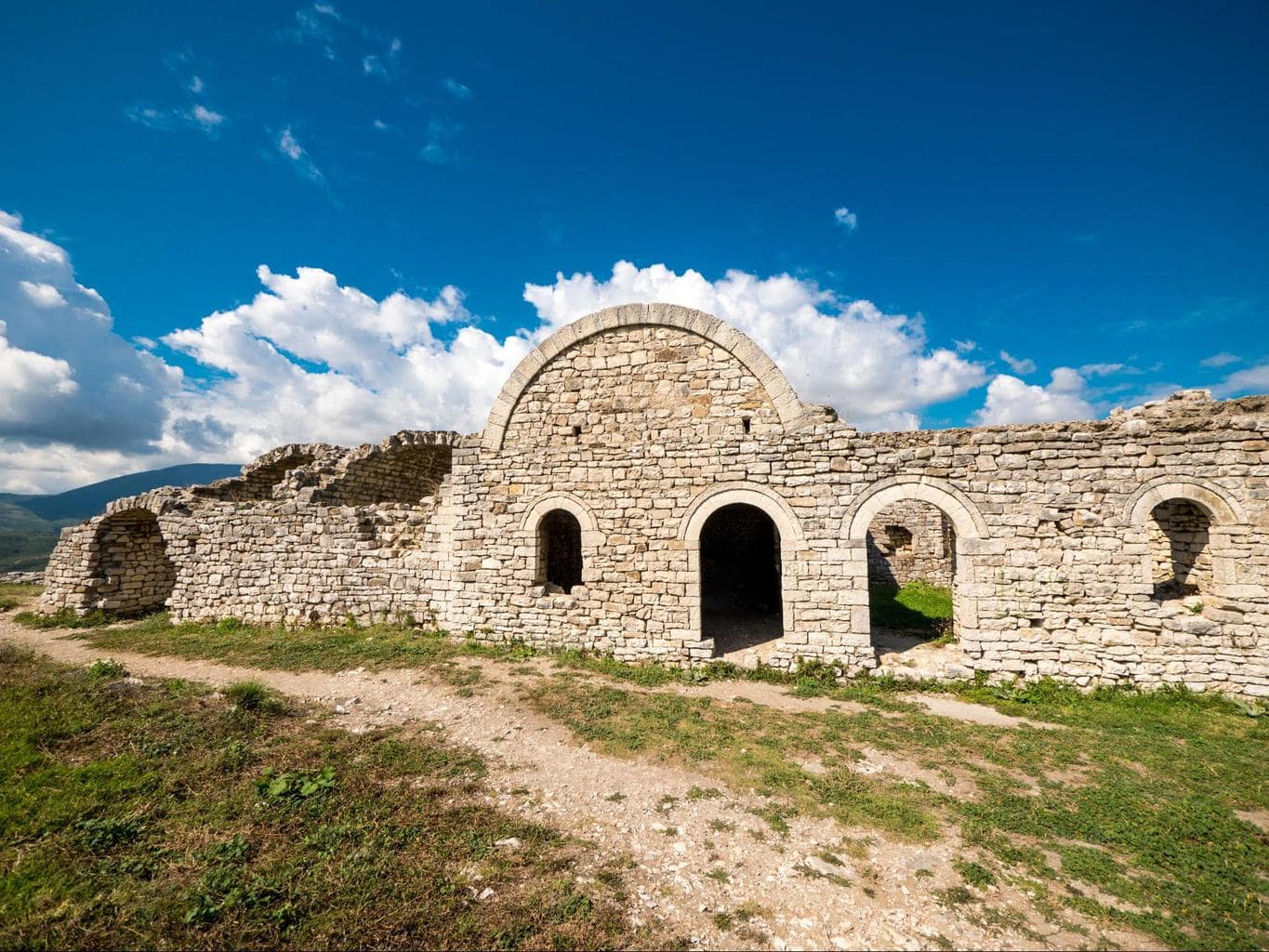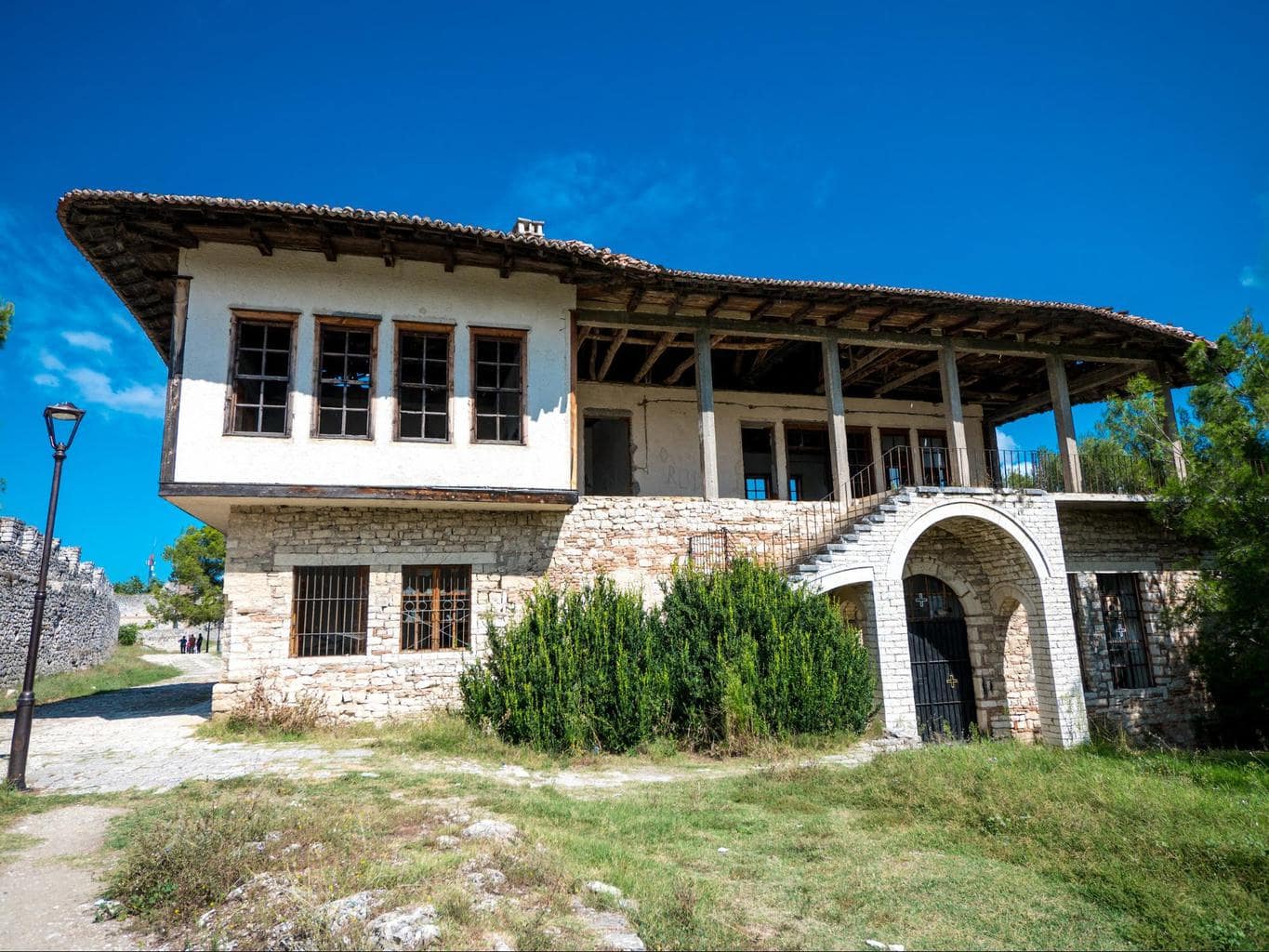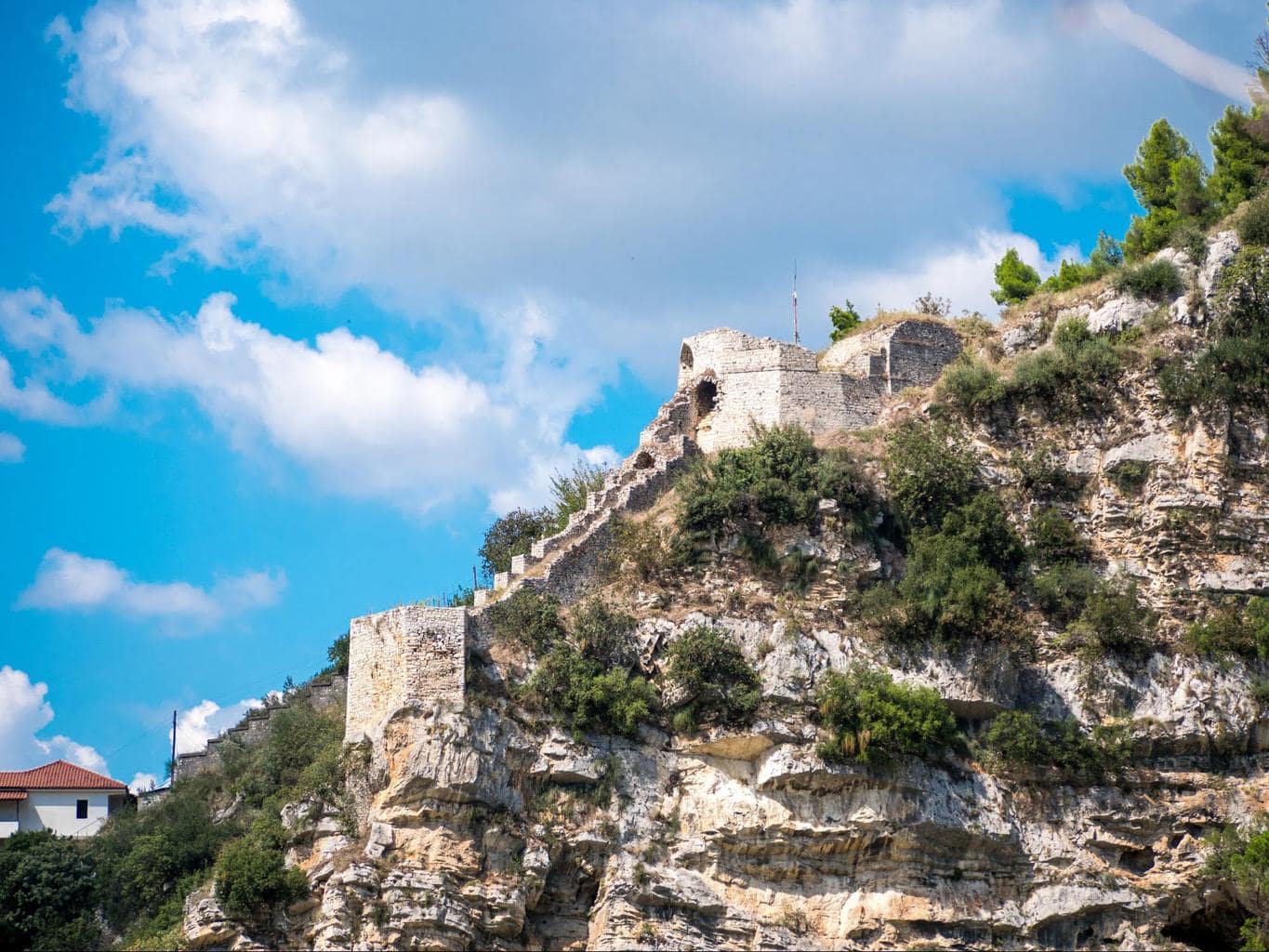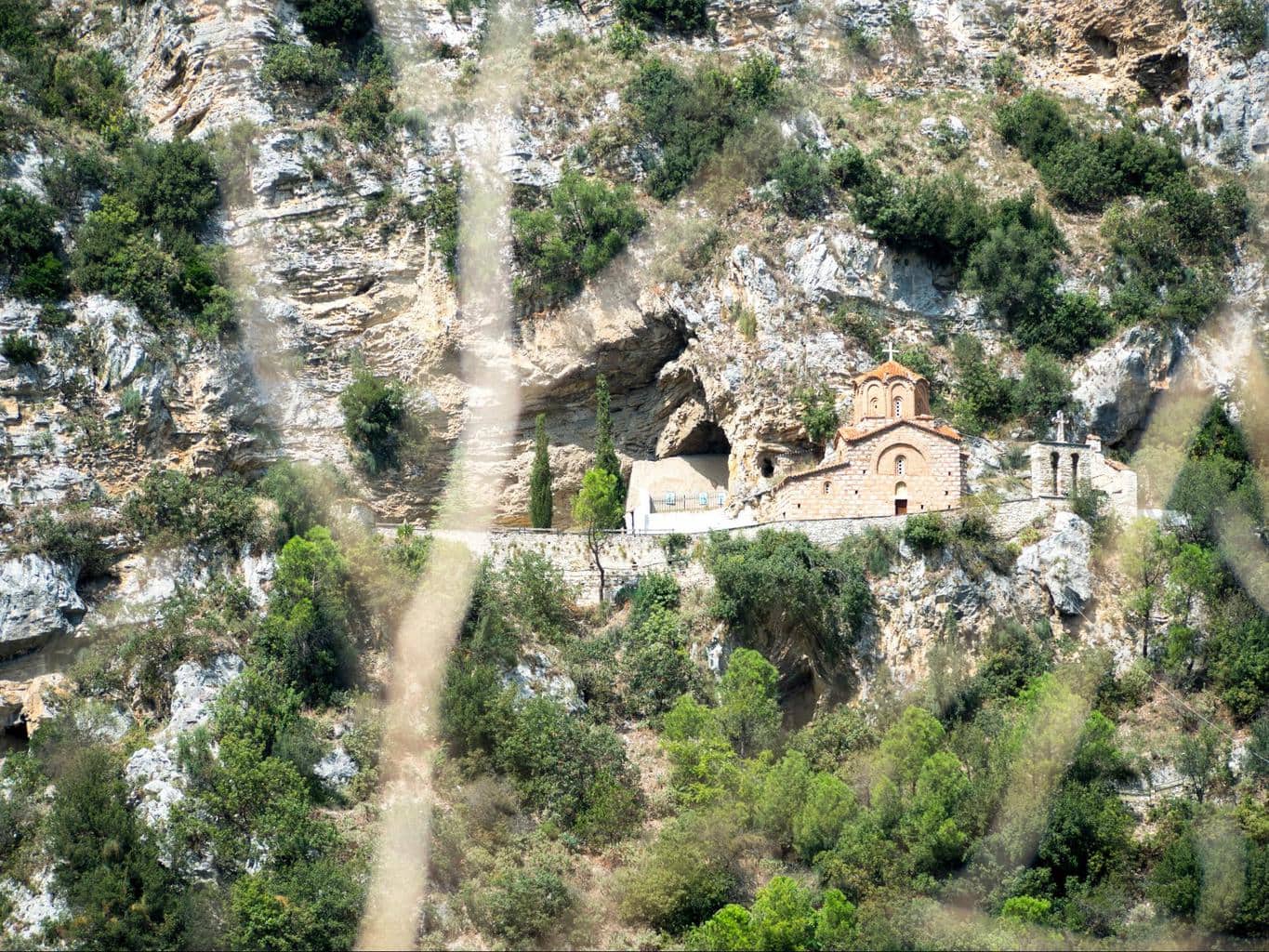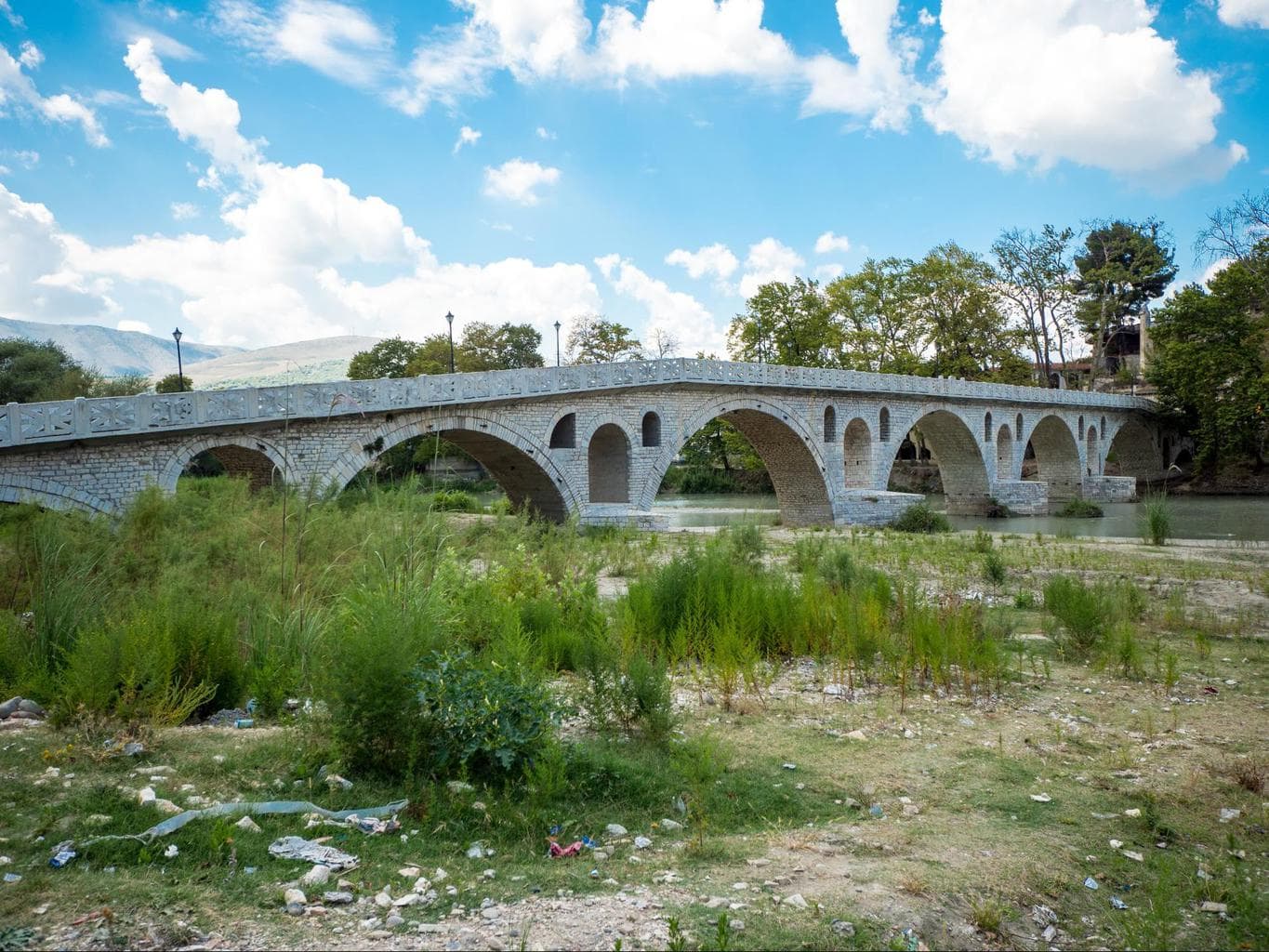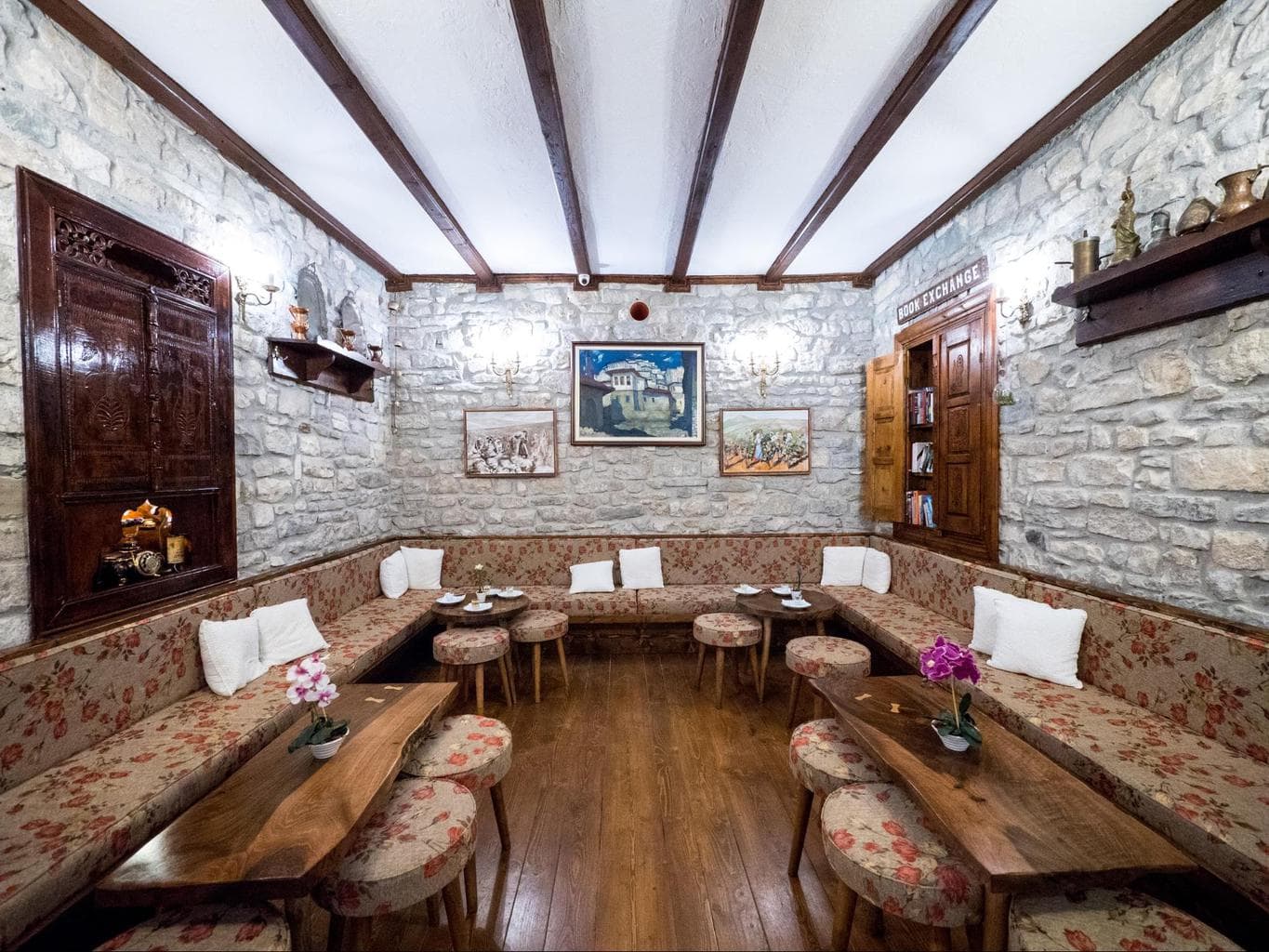All travel in Albania needs to start in Tirana. After visiting the capital I would recommend a visit to picturesque Berat. Along with Gjirokaster, it is one of the country’s UNESCO sites and a stunning example of Ottoman architecture that is beautifully preserved.
The city’s name probably came from the various variations in the languages of all the people who lived here and was originally known as Belgrade which translated as “white city”. Berat was given by the Ottoman Empire in the 15th century.
Berat is made of three parts, the castle at the top of the hill called Kalaja. The other two parts are of the city, one at each side of the river. Mangalemi on the foot of the castle and Gorica on the other side.
It is this geography, split by a river with houses on each side of two hills, coupled with towering rows of white washed buildings which give the city its stunning appearance and the nickname city of “a thousand windows” or “of windows on top of each other” depending on how the old Ottoman words are interpreted.
Berat’s unique Ottoman architecture does indeed feel like it has many eyes looking at you, as the top floors of the houses are made almost entirely of square windows. These defensive structures, also found in Gjirokaster, were designed to provide safety to those inside.
If you look closer at the houses you will see that there are more and larger windows on the top floors than there are on the lower floors. This was a defensive measure to prevent attackers coming in through the lower floor openings.
A visit to Berat is definitely one of the best things to do in Albania and a nice contrast with the country’s Roman and Illyrian past on one side, and the popular beaches on the other. Together with Gjirokaster, this is where the country’s Ottoman heritage shines.
Berat’s essential must-do list includes the castle where you should concentrate most of your sightseeing, as well as monuments that can be found outside the city walls in Mangalemi and Gorica.
For a personalised guided walking tour of the city that visits all the most popular sites included in the list below, click here. If you’re more of an outdoor person, there is a great guided hike to the gorgeous Osumi Canyon near Berat which you can book online here.
Then explore over 200 more UNESCO sites across the continent in our epic European Road Trip Guide.
Berat Castle
You can only reach the castle on foot starting at the base of Mangalemi in front of Mangalemi Hotel, and follow the street that climbs by the side of the castle. The walk is steep and was being repaved when I was there so should now be spanking new. Have a hearty breakfast and then face the incline. It will all be worth it once you get to the top.
While you will not get a brochure of the castle at the entrance, there are panels with information near many of the sights and also a few maps of the castle area scattered across which you can refer to to find the most interesting places to see in Berat.
The main entrance to the castle is from the back where you can pay an entry ticket and then walk into a sort of small square where you can find some souvenir street vendors, a bar and one of the small churches, the Church of St. Theodore which is usually closed but can be seen from the outside.
There are as many as 20 churches inside the castle walls which were built for the primarily Christian population, around the 13th century.
They are all in varying degrees of preservation and, although they are mostly closed, if you find the caretaker who has the keys and is usually around, he or she will open it for you. Inside, you will find magnificent frescoes and murals.
Many of the best things to do in Berat are precisely related to getting the caretakers to show you in, otherwise you will miss the stunning frescoes and murals that make the otherwise stone cold sober churches shine like a work of art.
Church of St. Theodore
The Church of St. Theodore was built in the 16th century over a previous late antiquity church. From the original church you can still see a fragment of the paleochristian columns which are placed in the apse window and can be seen from outside.
Cathedral of the Assumption of St. Mary – Onufri Museum
The first stop inside Berat’s Castle should be the Cathedral of the Assumption of St. Mary which has been turned into the National Iconografic Museum where the works of Onufri and his followers are displayed.
Onufri was the most famous 16th century Albanian painter and author of many of the murals and frescoes that fill the many churches in Berat and across Albania.
The church itself was built in 1797 and is one of the most representative examples of Byzantine architecture in Berat. It is beautiful too, not just a vessel for the painter’s work, and the place where the two Codexes of Berat were hidden.
Take a closer look at the gold leaf 1806 iconostasis inside the church. Onufri was known for creating a new shade of bright red which he used in his works and became known as Onufri red across the world. He also had a unique way of depicting people with a renewed realism.
There are brochures and laminated translations in a few languages in the museum’s ticket office which you can borrow after paying the 200 Leke entry ticket. Inside, there are additional explanations by each exhibit.
The church remains on the ground floor while the museum is on the upper floors and displays a lot of Onufri’s works as well as other religious objects and artefacts.
Church of St. Mary Blaherna and Church of St. Nicholas
These two side by side churches have some of the most impressive mural frescoes in Berat but are usually closed to visitors unless the caretaker opens them for you. She is usually around and can be persuaded with a small tip you can give at the end.
The Church of St. Mary Blaherna is one of the oldest in Berat and has a small garden in front which is also locked unless the caretaker opens it for you. It is believed that the church was a 6th century monastery first before it was turned into its current form between the 13th and 14th centuries.
The church windows have been covered in both cases and the shape and architecture of both buildings is such that they could well be regular houses if it were not for the display explanations next to them but go inside and you will marvel at the impressive frescoes that have been relatively well preserved.
Onufri also painted this church in 1578 and you can also make out some of the floor mosaics as well as the rather well preserved paintings on all of its walls.
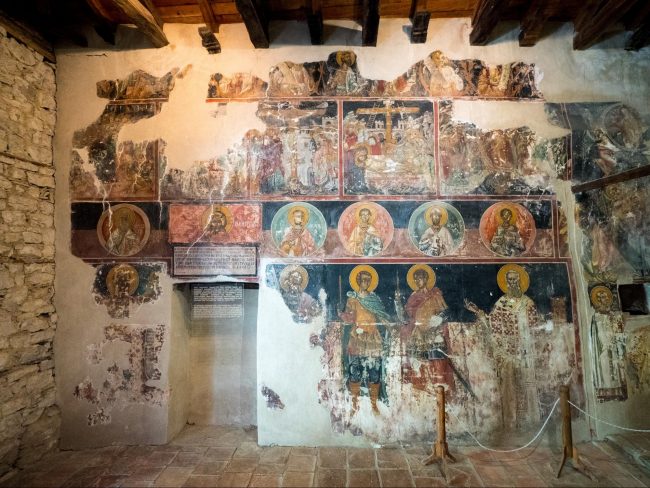
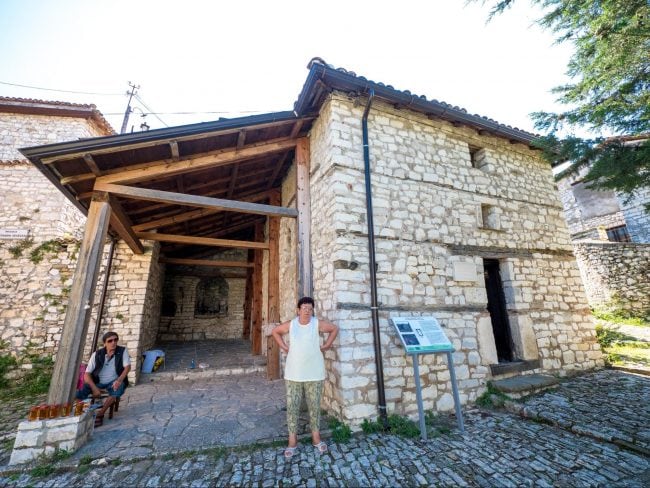
The Church of St. Nicholas was built in the 16th century and was painted by Onufri. It is in a regular rectangular shape and empty inside but you can make out the ruins of two paraclesis used for supplication to the saints, in this case to St. Nicholas and St. Thomas.
Berat Castle citadel
The main point of interest in Berat is the castle citadel itself. The remains of what used to be a sort of fortification can be seen at the back of the walled castle area.
You will still be able to make out the walls, the vaulted ceilings of the storage area and the White Mosque, although not much is left of it. There is also a bar for a break on plastic chairs to take it all in.
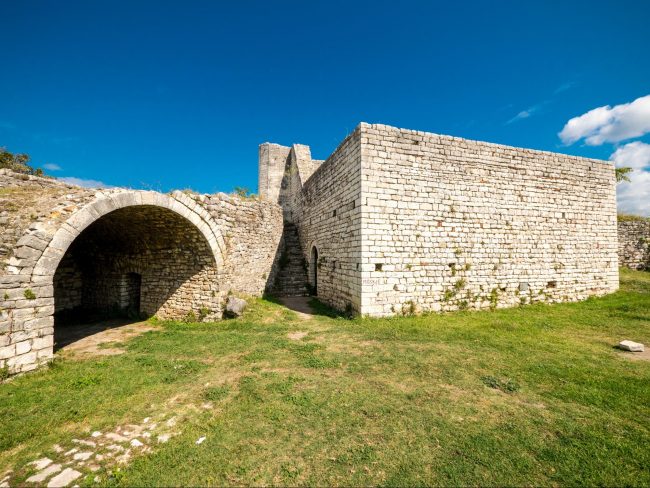
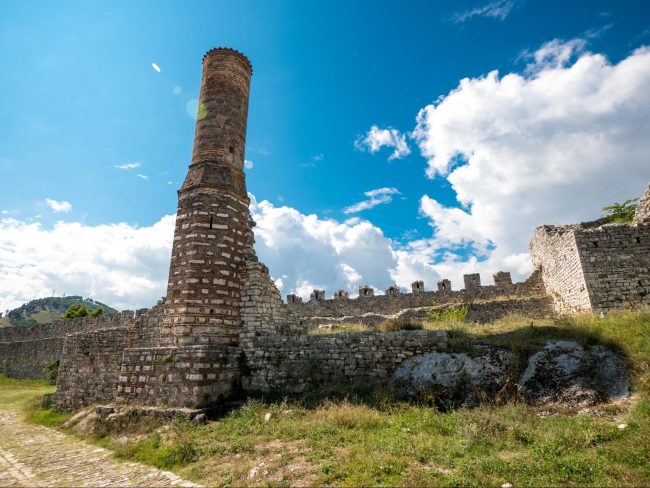
In the same area there is the Red Mosque which is more easily recognizable for what is left of the tower minaret and lies right outside the citadel walls.
Church of St. George
This is perhaps one of the better preserved churches and one of the buildings that looks the least like a church. Designed in the typical Ottoman style of the rest of the city, Church of St. George lies a bit farther away from the main monumental area towards the end of the castle.
If you continue from this church down the hill and take the steps the descend you will arrive at a nice viewpoint from where you can see Gorica on the other side. There is a viewing platform too. Here you will also be able to see the the gallery walls at the back of the castle.
Church of St. Michael
Outside the castle walls you can find the Church of St. Michael perched on the cliffside, above the river and below the castle, accessible only via a snaking path. The King Mosque was built in between the 15th and 16th century and is located at the base of the hill.
Berat National Ethnographic Museum
This is a good place to learn more about everyday life with objects, clothing and furniture spread over two floors. The museum is located in Mangalemi at the base of the ascent to the castle, so you might want to visit it at the end after you return.
Gorica Bridge
To cross to the other side of the city you can use the 1780 Gorica Bridge which is also a pretty landmark in Berat. There is another modern bridge closer to Mangalemi you can use but this one has historical value.
Enjoy traditional Albanian food
Have a meal at Mangalemi Hotel which has a lovely rooftop terrace and restaurant and a nice and traditional lobby bar where you can sample some local rafia brandy and other traditional Albanian foods such as the local version of Turkish delight which in Berat is a specialty.
What you need to know before visiting Berat
Berat is a rather compact place to visit and to be able to see everything you will probably need a day to see it all, with the morning spent at the castle, then lunch and some short exploration of the rest of the sights on the other side of the river.
If you stay overnight, Mangalemi Hotel is a great place to base yourself. It is central, it has character and it is charming. It is also very reasonably priced and friendly staff. The rooftop restaurant is a must for dinner when it is romantic and scenic.
If you are driving from Tirana for the day, start early so you arrive by 10am or before. You will need about half an hour to make it up the steep path.
The castle opens at 9,30am but there is no such thing as a gate. We arrived at 9am, did not realise it was not open yet and simply walked in without paying the entrance fee. Nobody said anything and we paid the ticket on our way out.
The Museum opens until 2pm in the winter except weekends when it is open until 4pm and until 6pm in the summer months. It is well worth a stop.
Parking in Berat can be a bit of an issue since the city is really small so try to find a spot farther away from the path to the castle. There is also a public parking lot near the Ethnographic Museum. And be careful when driving, a little known fact about Albania is that the drivers can be a bit aggressive.
Like with all of Albania, Berat is steep and made of irregular cobblestone or rocky pavement. This makes walking quite a time consuming and intense effort as you really need to watch where you step. Wearing appropriate footwear is essential for safety and comfort.
In my opinion, closed shoes with grip will make your life much easier. Sandals, shoes with thin and flat soles that have no grip or heels are a big no, you can easily slip and break a leg. Sunscreen and a hat are also a wise addition since the castle has practically no trees or shade. Bring a water bottle too.
- Check if you need a visa, get help processing it at iVisa.
- Never ever leave without travel insurance. Get affordable coverage from World Nomads or long term insurance from Safety Wing.
- I find all of my flights on KAYAK. Check their Deals section too.
- Search for all your transportation between destinations on the trusted travel booking platform Bookaway.
- I book all my day trips and tours via GetYourGuide, they are the best and their tours are refundable up to 24h in advance.
- Get USD35 off your first booking with Airbnb.
- Compare hotels EVERYWHERE at HotelsCombined and book with Booking.com.
- Compare car rental prices at Rentalcars.com

